Retirement Bucket Lists: Bagging the National Parks
Category: Adventurous retirement
August 25, 2013 — Visiting the National Parks is high on most baby boomer bucket lists – at least that’s what we’ve learned from our previous surveys (see Further Reading at end). So when your editor rolled into Yellowstone National Park two weeks ago, he not only ticked off a bucket list item, but he also experienced another great thing about getting old enough to retire. As we arrived at the gate in we noticed a sign that said Interagency Senior Pass. Asking about it, we were astonished to find that for a mere $10 anyone who is at least 62 years can enter any National Park or Natural Wildlife Refuge (more than 2,000 sites in all) for the rest of your life. And that’s just not you the pass owner who is covered, it’s everybody in the car, regardless of age. Discounts on amenities like camping fees are also usually available. (See end of article for how to get one, along with many other resources to help plan your trip).
Now that you are retired you finally have the time to visit the parks. You also have an unbelievably cheap way to experience a top bucket list item. But how can you best take advantage? This article will address some of the top ways to enjoy the national parks, where to stay, what to do when you’re there, along with some safety tips. We are also hoping you will take this opportunity to share your suggestions in the Comments section on your favorite national parks and the things to do while you are there.
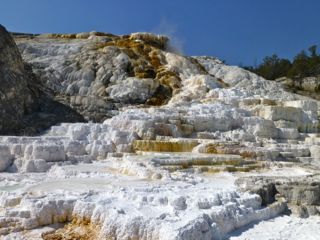
Some National Park Factoids
President Teddy Roosevelt was a big fan of the outdoors, and he was very influential in getting the parks started. Yellowstone was the world’s first National Park, approved in 1872. There are 59 National Parks in the U.S. (although there are 401 “units” in the National Park System. The largest national park is Wrangell–St. Elias in Alaska at over 8 million acres. Hot Springs in Arkansas is the smallest. Pinnacles (CA) is the newest (2013). Great Smoky Mountains National Park in North Carolina and Tennessee is the most visited. Most of the parks are in the American west; only a few, such as Acadia National Park in Maine, are in the east.
Best ways to visit them
There are many ways to visit the national parks, whatever your transportation preferences and physical abilities. All of the methods we discuss here were on display in Yellowstone this August.
Car or minivan. Drive your own car, or rent one at an airport or train station. The self-drive option gives great flexibility – you go where you want, when you want.
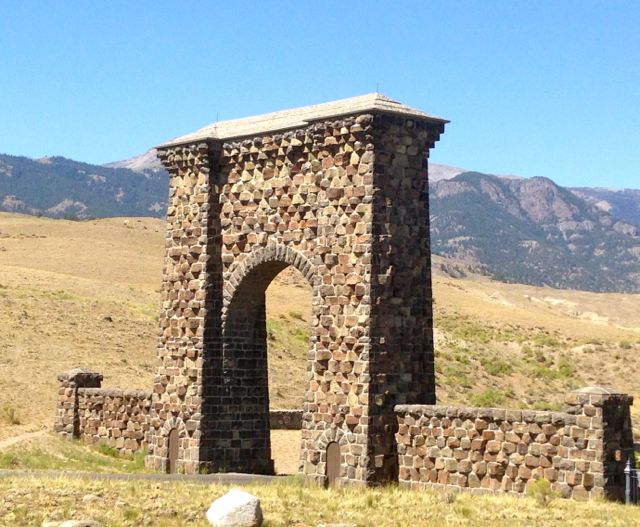
RV. This is a terrific way to see the parks, particularly if you want to visit several in a region. Once again, it might be your own rig or one you rent from CruiseAmerica, Camping World, or other provider. The advantages of this mode of transport are many. For one, you can travel economically and with all the creature comforts of home right with you. If you need a snack, nap, or a bathroom, it’s right in back. You don’t need a hard to get and expensive hotel room (Although you will need a reservation, unless you decide to leave the park and stay (free!) in a Walmart parking lot.) Two couples or several single people can travel together in an RV a lot more comfortably than in a car.
The main disadvantage of an RV is that somebody has to drive the rig. Fortunately most rentals are a reasonable size and fairly car-like. Private RVs range in size from customized vans, pickup truck units, to giant luxury rigs as big as a greyhound bus. Almost all represent a vehicle that you would prefer never to have to back up!
Motorcycle. An impressive number of baby boomer age people visit the national parks via motorcycle. Though we don’t get why so many opt for ultra-noisy models that disrupt the experience for others, the appeal of free-wheeling through the parks is readily apparent. Travel light, of course. That said, we did notice some folks who carried all their camping gear on their cycles.
Train. At Yellowstone we ran into a tour group that was traveling by train. You are met at the station and escorted through the park, hassle free. Sounds like an interesting option. Amtraktoparks.com says that you can visit 237 parks by train. (See end of Article for possible sources).
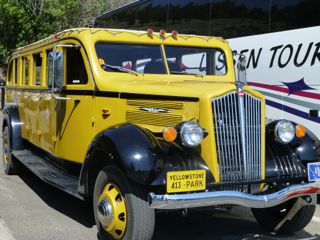
Private tour. Dozens of companies offer private and group tours of the national parks. Normally you are driven on buses or big vans. The advantages include lack of hassle, expert commentary, and ease of travel. Disadvantages include having to travel with a group of strangers (except for smaller private tours), expense, and lack of flexibility.
Biking. We did see some some intrepid cyclists who were touring the national parks. You have to be in good shape and travel light, but you will really experience the open air! Not all roads are great for cycling, so you should do research online to prepare your route. You can even rent bikes within some of the parks, such as the Old Faithful location in Yellowstone.
Horseback. Many of the national parks can be explored on horseback, which is a great way to see them. There are special stock trails set up and many outfitters to choose from.
Where to stay
Camping. There are plenty of campsites at most national parks. But you generally will need a reservation. You will also need to follow common sense safety precautions, since generations of campers have produced bears trained to look for human’s food. There are frontcountry sites near roads where you can car camp, usually with restrooms and running water. There are also backcountry sites for backpackers. Either way you will need a permit obtained in advance. In contrast to federal wilderness areas, in the national parks you must usually camp in designated areas, which can take away from the wilderness experience (see vignette of your editor’s wilderness experience at end).
RV camping. Many of the national parks have designated RV camping areas. Reservations are a really good idea, although there are usually some spots available to drop-ins who arrive early enough to snag one. There are usually plenty of private campgrounds outside the park grounds.
Park lodges. The National Park System has some great lodges that are located right at the best sites. The ones at Yellowstone’s Old Faithful Inn, Glacier National Park’s Many Glacier Hotel, Yosemite’s Ahwahnee, and Grand Canyon National Park’s El Tovarare are particularly memorable. You will need to make your reservations at least a year ahead.
Outside the park. There are almost always plenty of accommodations of varying quality outside the parks. Use TripAdvisor, your travel agent, and other sources to ones that fit your needs.
What to do
Most people probably just drive through the national parks, occasionally stopping at one of the famous sites like Old Faithful or peering over Arizona’s Grand Canyon. But there are so many interesting things to do in the parks – don’t just stay in your car and/or park at the major stops. Most of the parks have a “Things to Do” page which you can find from http://www.nps.gov/ Here are some ideas:
– Take a guided tour or talk with a ranger. Check with the park for guided or interpreted tours. You will learn so much more from these experts.
– Camp
– Hike or backpack
– Fish (you will need a license)
– Horseback ride
– Picnic
– Take a boat ride
– Snowmobile
– Wildlife viewing (don’t forget your binoculars)
– Visit with friends, grandchildren, or other group
Staying Safe
The National Parks get a lot of visitors, and not everyone there is guaranteed to be a nice person. So protect your property. Drive safely. Do not feed or approach wildlife – stay in the car with the windows up. Buffalo can and do charge people unpredictably. At many of the western parks in particular it is necessary to observe some common sense precautions about bears (black and brown/grizzly). If camping, you will be required to store your food safely in a bear-proof canister and suspend it from the ground. No food, not even toothpaste or sunscreen, should be kept in a tent. Packs should be open, emptied of all food, and kept away from tents. Follow all regulations to a T. Hikers should make noise as they hike to let wildlife know you are about. Bear spray should be accessible as a last line of defense.
For further reading:
Senior Pass to National Parks: Your ticket to more than 2,000 federal recreation sites. Each pass covers entrance fees at national parks and national wildlife refuges as well as standard amenity fees at national forests and grasslands, and at lands managed by the Bureau of Land Management and Bureau of Reclamation. A pass covers entrance and standard amenity fees for a driver and all passengers in a personal vehicle at per vehicle fee areas (or up to four adults at sites that charge per person). The Senior Pass is $10 if you buy it in person at a park, $20 if you mail it in. See Senior National Park Passes
List of the National Parks
Visiting the National Parks by Train
Backcountry Hiking and Camping
RV Camping in the National Parks
How to Make Reservations in a Popular National Park
Wow, Your Bucket Lists are Amazing
Comments. We would all love to learn about your favorite national parks, and what you like to do when are there. Which ones are left on your bucket lists? Please share your thoughts in the Comments section below.
A note about your editor’s trip. Your editor drove through Yellowstone with some friends and then went on a 7 day backpacking trip into the Absaroka and Beartooth Wilderness, which is just north of Yellowstone in Montana. We went off trail and climbed up and around some of the rockiest, most beautiful terrain on the planet. We camped near pristine lakes with towering mountains above -sometimes teeming with fish, sometimes not. Never saw any sign of bear, except possibly the scat of 1 black bear. Going off trail was extremely liberating, far from any sign of humans and surrounded only by nature’s beauty. Here are a few pictures from our trip. You might want to check out the Pinterest Boards we just created with more pictures. The 2 new boards are on Alpine flowers and Amazing Rocks of the Beartooths.
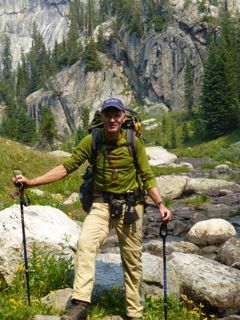
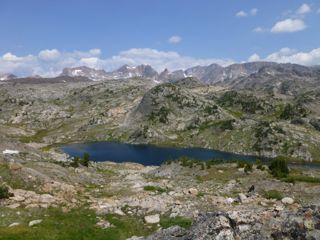
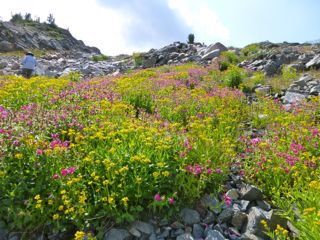
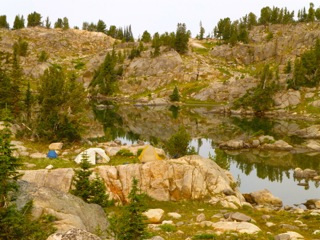
More Bucket List Articles:
Our Pinterest Bucket List (lots of cool photos)
What’s on Your Bucket List?
Bucketlist-Topretirements – The Complete List of Responses
Top Member Concerns at Topretirements – A Survey
Best and Worst Things About Retirement – A Survey
Australia as a Bucket List Destination
Nostalgic Cars of the 50s and Sights of Cuba
An Antarctica Bucket List Adventure
Bagging the National Parks
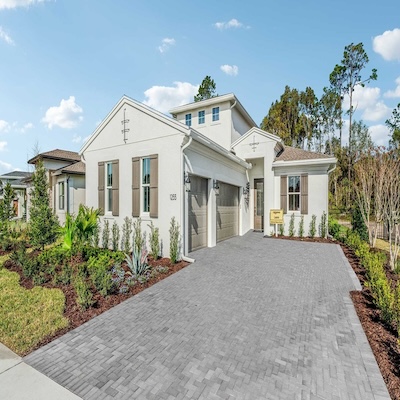
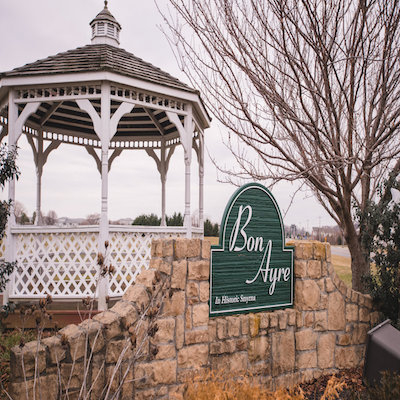
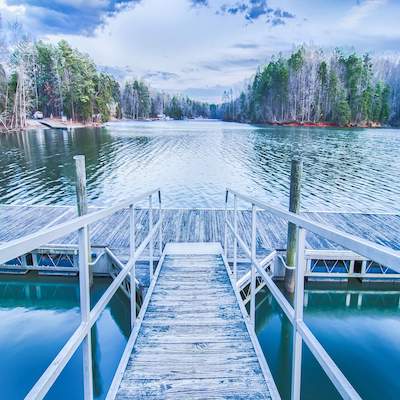
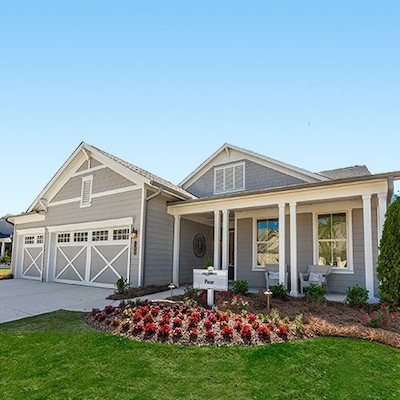


Comments on "Retirement Bucket Lists: Bagging the National Parks"
Amelia Williams says:
I'm feeling a bit out of the loop! The only park that I've only visited the Great Smoky Mountains. Ruby mining is enjoyable, but I really love going to some of the quaint little restaurants around Highlands, NC. On my bucket list is the trek West - I want to see the Grand Canyon and the Rio Grande. It's time to get an RV!
http://www.redwoodsinyosemite.com/ says:
I have visited Yosemite numerous times. Day trips, camping in the park itself, and .... what I have found best suits me as I get older, staying at the cabins near the south entrance (link at end). I most enjoy Yosemite in the fall, mid Sept through mid Nov... no snow, few tourists and beautiful colors. I have no affiliation with these cabins, and pets are welcome at many of them. http://www.redwoodsinyosemite.com/
Jan Cullinane says:
Enjoyed that virtual trip, John! This summer, I did a 10-day trip including the "Big Five" National Parks in Utah. If anyone is interested, my article (with a few pictures) is here: http://www.restartretirement.com/2013/07/24/touring-national-parks-utah/
As I say at the end of the article, it truly is "America the Beautiful."
Jan Cullinane, The Single Woman's Guide to Retirement
Linda says:
The $10 senior lifetime pass is the best value on the planet. Amelia, you don't need an RV, just hop in your car and go. I've done many of the gorgeous parks out west. Just checked Great Smokey Mountains off my list this summer.
Deb says:
What a great article to inspire getting out to see the country. Anyone with experience renting an RV from one of the providers mentioned or another way to get one for a couple of weeks at a time, could you give your info?
Rich says:
If you travel with a dog, one of the biggest disappointments and biggest problems will be the National Park policy that does NOT permit dogs on almost all trails an in park buildings including museums, ranger offices, hotels and tour buses. They are allowed only on very limited access paths so you cannot enjoy the splendor of these gems with your best friend. You can argue all you want and if you are adamant enough you risk being told to leave the Park altogether.
Three years ago, we took a 10,000+ mile road trip around the western US specifically planning to visit all the Parks we could and especially to roam Yosemite's Geyser Basin again with our dog. The dog was grudgingly allow to stay with us in our cabin room (we could not stay at the Lodge) but otherwise only at the extremely crowded (bad for dogs) Old Faithful overlook. That really through water on our plans and we chose to leave early for a more dog-friendly place. At the Grand Canyon North Rim, the only "dog trail" is the one that runs next to the huge parking lot.
Dogs ARE permitted on National FOREST trails, but be extremely aware and cautious that they may attract bears and other disgruntled wildlife.
Rich says:
I'm sorry, I didn't mean for that to sound as negative as it does (I don't seem to be able to edit it). But it IS very important if you're planning a long trip. Get the Senior Pass and PLAN for the inconvenience and how you will arrange for the care of your dogs. Some parks have kennels if you choose to use them.
I also want to completely agree with Linda -- you don't need an RV to travel extensively throughout the US. We've done both and have decided an RV is as much an encumbrance as a help. That last 10,000 mile trip, we used just one Camry Hybrid, a special back seat platform for our dog with two plastic sets of drawers in the back seat also for almost all our clothes. Each night we removed what we needed from the drawers and took into the hotel only an airline carry-on. We slept in comfort while retaining complete local commute flexibility with our car. The actual cost for our 5-week trip was LESS than the cost of using an RV and "camping". During that trip we went to 12 national parks and national monuments using our Senior Pass. Incidentally, we also stayed one night downtown on the Las Vegas Strip with our dog -- the Senior Pass didn't help there, but the TravelLodge was clean and comfortable.
Next year we are planning another long trip out west with TWO dogs. This time know the National Park limitations and are planning for it. We instead have reservations in a house near Sedona for a month, will travel a week around the Parks of southern Utah (we previously spent a week at Zion and Bryce with the RV), and finish with 3 weeks in a condo in the Colorado Rockies. These are all areas we spent little or no time at on our previous two trips. During our stays we plan to explore all over those areas more intensively than we could during our "road trips" and return to some of the really special places like the South Rim.
BTW, you can pick up your Senior Pass at any Nationl Park, National Monument OR NATIONAL FOREST ranger office.
Chris says:
Wow! It is very exciting to be near Yellowstone. That's for sure. My husband and I live full-time in our motorhome. We have had the privilege of living just outside Yellowstone National Park in the small community of Silver Gate since mid-May 2013. We are taking care of three cabins for the owner, who lives in Jackson WY. We have loved every minute of the climate. What a place to spend the summer! We haven't had to use our air conditioning but a few days. We have bears and bison walking right through our property here. Amazing. We are closest to the Lamar Valley of Yellowstone. We think the Lamar Valley is the best part of Yellowstone. Viewing wildlife and just enjoying the landscape is stunning. And then there's driving the Beartooth Highway, from Silver Gate to Red Lodge MT. We have gone up several times, each time getting a different feel for the area. Early in the season, you'll see lots of snow up top. Then there are the incredible wildflowers. We've been able to go to a rodeo in Cody WY. Oh, and the drive to Cody along the Chief Joseph Highway is stunning, too. Up from the north entrance to Yellowstone is Chico Hot Springs. What a place to go for relaxation in the outdoor hot spring pools. We enjoy our lifestyle and try to get to know an area as we live there for a while. Soon, we'll be on to another adventure. Thank you for the opportunity to add to your recent trip, John.
Stephen Frost says:
Last year took wonderful trip with REI to Grand Canyon and hikes rim to rim. Unbeleivable experience and all arrangement short of flights to Phoenix were made. Another option to see parks.
Nancy says:
Chris, glad to hear your thoughts about the Lamar Valley in Yellowstone. Two years ago we went on a family trip to some of the Western US Nat'l parks. We spent 4 nights in Yellowstone, 2 at the Roosevelt Lodge and Cabins in the northern area of the park. We decided that the Lamar Valley was our favorite place in the park but were underwhelmed by the lodging choices in that part of the park. My husband and I plan to go back someday, after the kids are out of the house, and we have looked into staying in Silver Gate.
Scott says:
The National Parks idea is brilliant. I, like many, want to see them all when I retire and have time. I went to Glacier National Park once after going to a graduation ceremony near there in May and the park was not officially open but you could go in and drop some money in the bucket at the entrance if you wanted to. It was nice because it was not crowded. No animals out then though which was good since I had two peanut butter sandwiches in my back pack which I did not realize could attract bears. The sign was not there in the parking lot (not to bring in food) but a little ways into the woods after I committed myself so I clapped my hands to scare the bears (I could not see – if there were any) and made it out alive. It must be me as I went to Norway and Alaska and never saw animals either. In Hawaii I went on a glass bottomed boat and saw hardly anything. When a guppy floated by the guy was desperate to show us something so he got all excited. I did see a few porpoises though.
How about an article on where you are guaranteed to see wildlife?